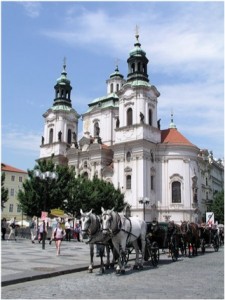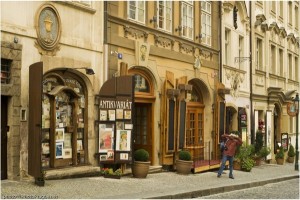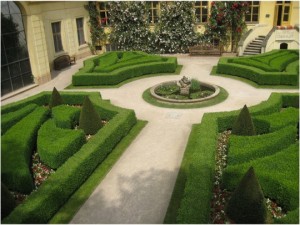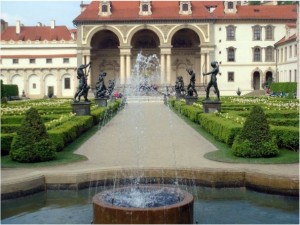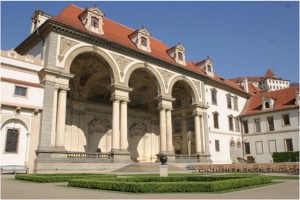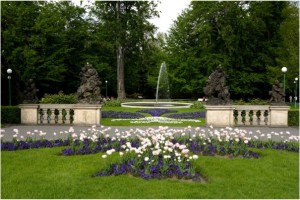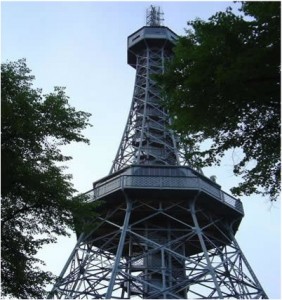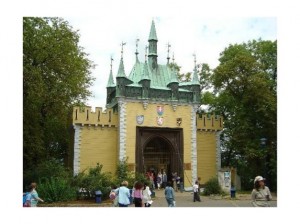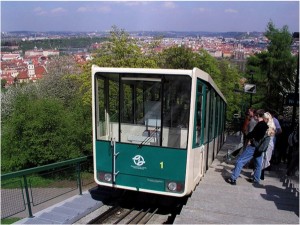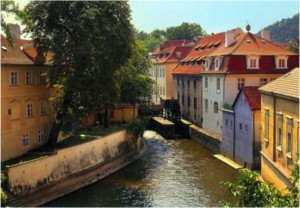 |
|
|||||
|
||||||
Places to visit... |
Lesser TownThe Lesser Town was founded in 1257 on the slopes bellow the Prague castle and it is the part of Prague least affected by resent history. Is lying below the castle and reaching across to the banks of the Vltava river. It is called Lesser Town because traditionally it was the smaller half of Prague, the half in which the king lived, and half away from the bustle of the markets on the other side. Kostel svatého Mikuláše (St. Nicolas’ Church) This church, built in the period 1704-55, is the most significant historical structure of the so-called Prague Baroque. The architects were G. Santini, K. I. Dienzenhofer, and A. Lurago. W. A. Mozart played the organ here during his stay in Prague. The belfry offers a view of the Lesser Town and an exposition “Music of Prague Lofts is situated there.” Nerudova ulice (Neruda Street) Once the main road leading to the Castle, this street is now named after the Czech poet Jan Neruda who lived in the house called ‘At Two Suns’ Kostel Panny Marie Vítězné (Church of Our Lady Victorious) 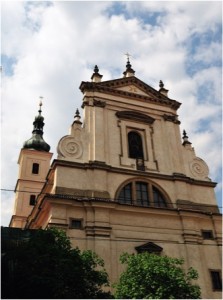
An early Baroque structure, built in 1611, and rebuilt by the Carmelite Order in 1634 – 1669. The church is famous for its wax effigy known as the Prague Child Jesus donated by Polyxena of Lobkovic and brought to Prague at the end of the 16th century Vrtbovská zahrada (Vrtbovska Garden) This terrace Baroque garden is designed according to plans of the architect F. M. Kanka. It is remarkable for its statues by Matthias Braun Valdštejnská zahrada (Wallenstein Garden) Geometrically designed, this garden was created in 1623-29 and features an imposing sala terrena, small lake, a cave with artificial stalactites and stalagmites, and plenty of roses, rhododendrons, magnolias and Japan cherry trees. The statues are copies of originals by Adrian de Vries from 1626-27. Valdštejnský palác (Wallenstein Palace) A large palace area, the first monumental profane baroque building in Prague built for Albrecht of Wallenstein between 1623 and 1630. Today the palace houses the Senate of the Czech Republic. Palácové zahrady pod Pražským hradem (Palace Gardens below the Prague Castle) The gardens are situated on the southern slopes below the Prague castle.In this place the ramparts were originally situated but at the beginning of the 16th century this defensive system has lost its primary importance, the ramparts were then demolished and the plots were sold. Subsequently the vineyards and Renaissance gardens of the Italian style arose here.After the Swedish devastation in 1648 the gardens were renovated, the Renaissance sternness was replaced by the Baroque adaptation – the balustrade terraces with sculptures, the monumental staircases, the fountains and jets. There are beautiful views of Malá Strana (the Lesser Town) and city-panorama from the terraces. Petřínská rozhledna (Petrin Tower) Reduced copy of the Eiffel Tower (60 m high) built in 1891 on the occasion of the Jubilee Exhibition. 299 steps lead up to the top platform. In March 2002 the Tower was opened again to the public after a wide reconstruction. Bludiště na Petříně (Petrin Labyrinth) A maze of mirrors set up originally for the Jubilee Exhibition (1891) and featuring a diorama of “Battle of the Praguers with the Swedes in 1648 at the Charles Bridge”. Lanová dráha na Petřín (Petřín Fanicular) On 25 July 1891, a funicular up to Petřín Hill began operating, using a water-balance drive system. It ceased operating in 1916 due to World War I. The funicular didn’t resume operation until 1932, when it was also converted to an electrical drive system. It served the public reliably for over 30 years. In 1965 extensive landslides took place on Petřín, which destroyed the funicular’s tracks. The Petřín funicular resumed operations after a 20-year pause, in 1985, when it was made part of the urban mass transit system. Kampa An island under the Charles Bridge, giving a view of the river Vltava and the National Theatre. At one time famous for its potters’ markets. |
|||||
|
||||||
|
|






